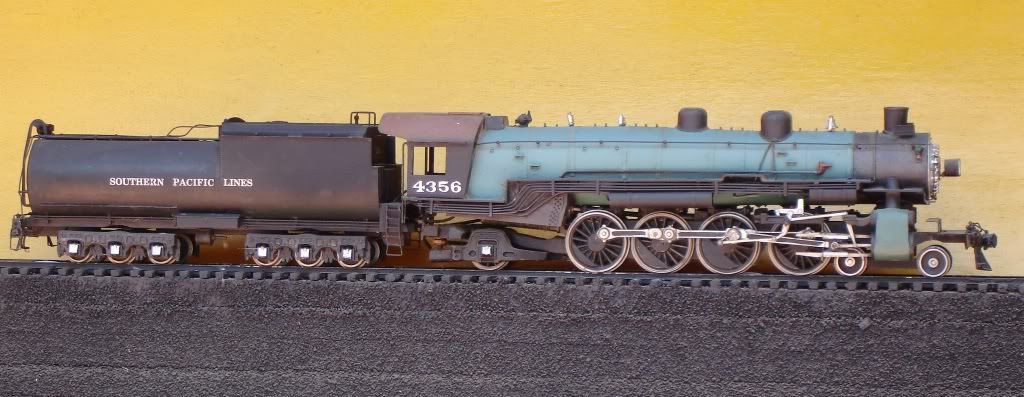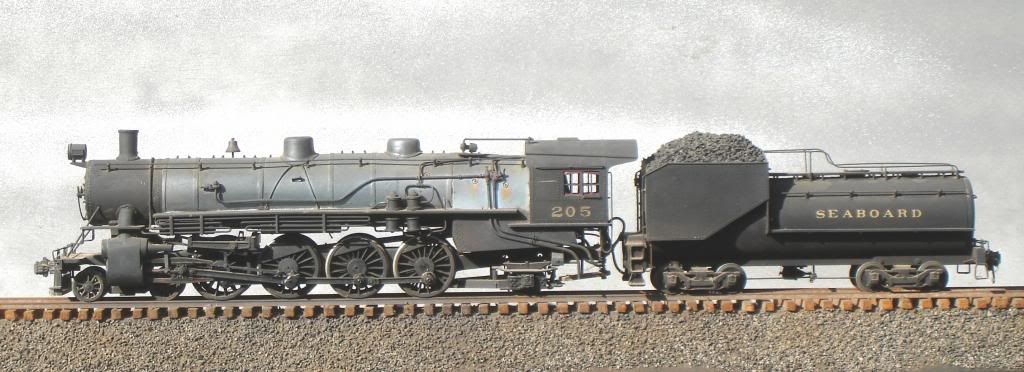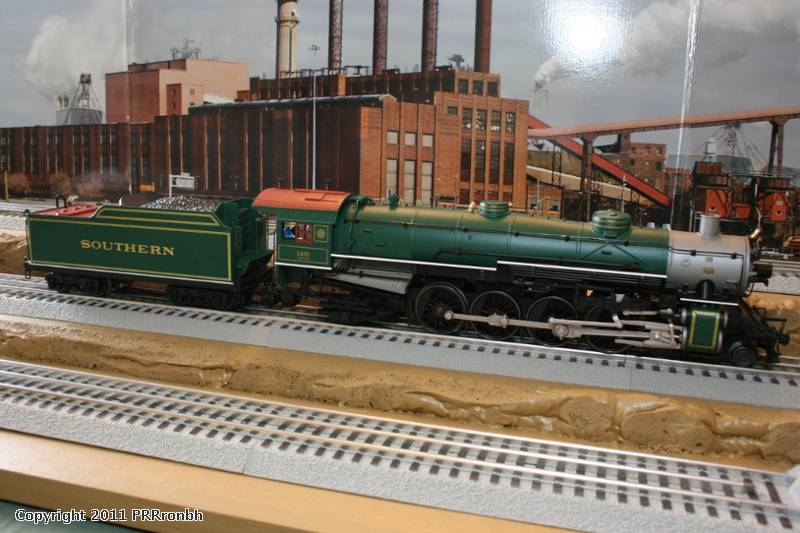The 4-8-2 Mountain type locomotive emerged in the early twentieth century in order to handle increasingly heavy passenger trains on mountain grades. While 4-6-2 Pacifics could keep schedules on flatter land, more tractive effort was needed to handle new all steel passenger cars in the mountains without resorting to the expense and delay of adding helpers. The 2-8-2 Mikado type had the pulling power needed. By adding a four wheel engine truck to a locomotive with Mikado like running gear Alco and the Chesapeake & Ohio created the first Mountain type in 1911. While some other mountains were constructed with the 62 or 63 inch drivers typical of Mikados the Mountain soon evolved into something more. By further elongating the frame to accommodate 69 to 73 inch diameter drivers railroads found the Mountain could become a versatile fast freight and passenger locomotive. That versatility lead to popularity and by the 1940s over 2200 Mountain type locomotives had been built for North American railroads.
Many railroads in the south, west and mid-west operated dozens of 4-8-2s. But they were especially important in the northeast. While Berkshire operators like the Nickel Plate and the Erie provided serious competition for fast freight between the eastern cities and industries and the western gateways at Chicago and St. Louis the lion's share of fast freight, express, mail and passengers in those markets were carried by the Pennsylvania Railroad and the New York Central System. The Pennsy and the NYC relied on 4-8-2s for fast freight power. The Pennsylvania had 301 M1, M1a or M1b Mountain Type locomotives. The New York Central eschewed the Mountain title on their water level route and referred to their fleet of 600 4-8-2s as Mohawks. And while 4-8-2s were the favorite fast freight power on the Central and the Pennsy they were also used in passenger service as an important supplement to the Hudsons and Pacifics that are so famously associated with those railroads.
In O scale today we have models on the market for the numerous PRR and NYC 4-8-2s as well as models of Mountain types operated by other railroads. Let's take a look at what is available in road name specific diecast models, review one design common to several roads and finally look at a mountain model that might have been before touching on brass locomotives.
Canadian National
The first MTH Premier line O scale 4-8-2 model depicts the Canadian National class U1F. Built by Montreal Locomotive Works in 1944 these Mountain type locomotives had refinements over earlier CN Mountains including cast steel frames. The 6060 survives in Alberta and has been used in excursion service. The 6069 and 6077 are on display in Ontario.
CN 6060, 20-3057-1 2001 Volume II
CN 6079, 20-3275-1 2007 Volume I
CN 6077, 20-3497-1 2013 Volume II

Two more locomotive numbers have been included in passenger sets.
CN 3276, 20-3276-1 Passenger Set 2007 Volume 1
CN 6069, 20-3498-1 Passenger Set 2013 Volume II

New York Central Mohawks
The first NYC Mohawks were the L-1 class. Built starting in 1916 these where among the early fast freight 4-8-2s with 69 inch drivers. The Central was pleased enough with the results to have purchased 185 of the type by 1918. While powerful for their day they were typical large engines of the era in having a moderate grate area, modestly sized super heaters and imperfect balancing of the drive wheels. Several dozen were scrapped before WW II. None have been modeled in 3 rail O scale.
NYC L-2 Mohawks
By 1925 the NYC found itself in need of faster and more powerful engines. By starting with the 69 inch drivers and 18 foot driver wheelbase of the L-1 and taking advantage of a decade of improvement in materials and locomotive design the NYC was able to create a more efficient and powerful locomotive. Compared to the earliest Mohawks the L-2a class featured an enlarged grate area, increased super heater area, a front end throttle, feed water heater, increased 225 psi boiler pressure, longer piston stroke, smaller cylinder diameter and could handle fast freight at mile per minute speeds day after day. Alco Built 100 L-2a locomotives in 1925-26. Two hundred similar L-2b, L-2c and L-2d locomotives followed by 1930.
Lionel introduced their model of the L-2a in 2003. It has a classic New York Central look thanks in part to the Elesco feed water heater mounted high in front of the smoke box.
NYC 2793, 6-38053 2003
NYC 2770, 6-11105 2006 Volume I

The 2006 Volume II Lionel catalog also included NYC 2795 in the 6-30044 freight set.

Lionel's 2013 version of the L-2a features Legacy command, sound and Odyssey II speed control and was available for separate sale and in a freight set.
NYC 2791, 6-11411 2013 Signature

NYC 2797, 6-11412 is included in the 6-29364 set. See Eric's Trains for a video review.

An L-2a Pilot Model (6-11410) was featured in the Lionel 2014 Signature edition catalog and reveals the extensive use of lost wax castings and other brass detail parts.
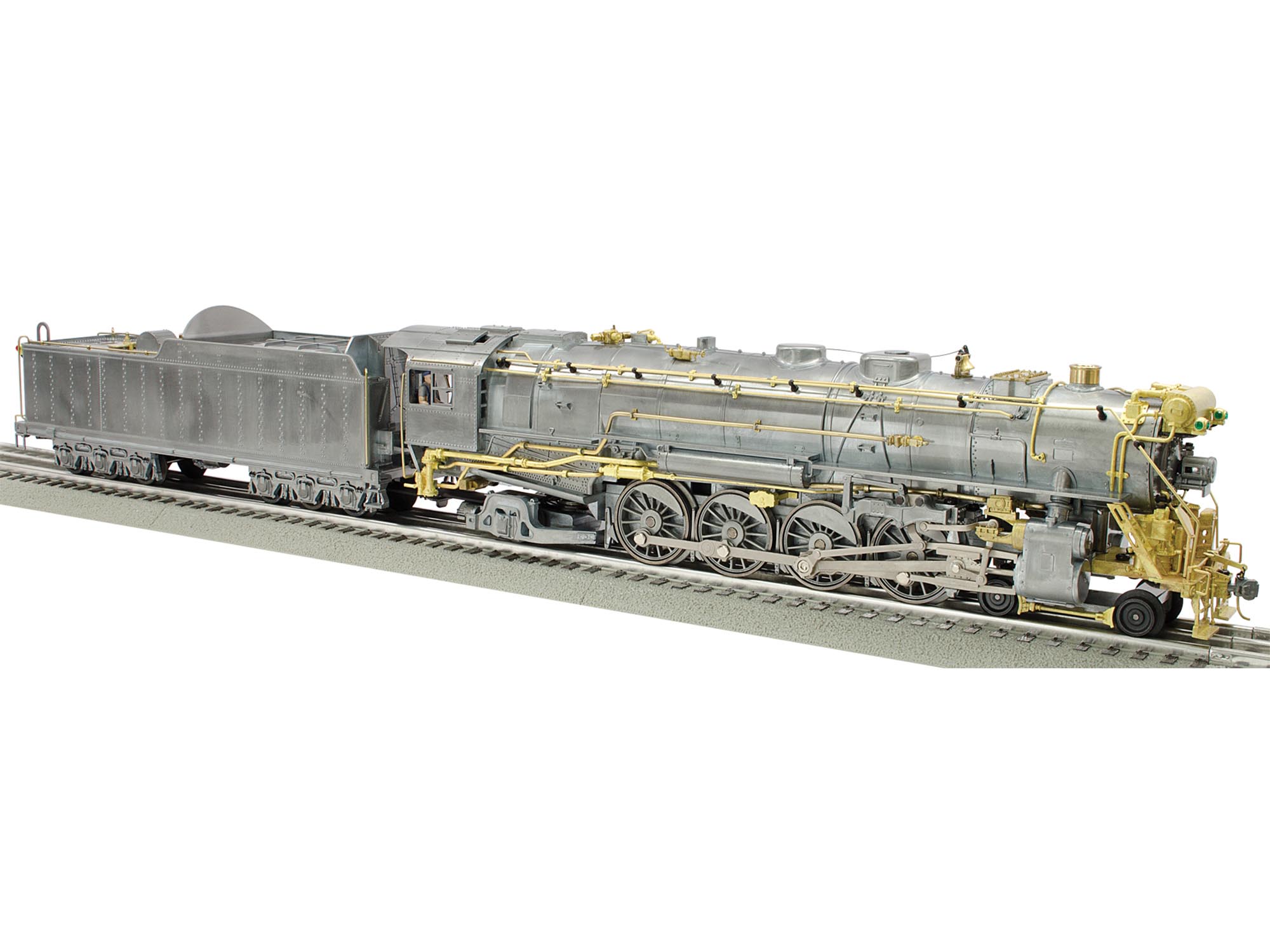
NYC L-3 and L-4 Mohawks
In 1940 the New York Central found itself in need of a true dual service locomotive. Two L-2s were rebuilt with light weight rods, improved balancing and roller bearings on all axles. This paved the way for the L-3 class which featured a lengthened wheel base to allow drivers of larger diameter. While only one L-3 received 72 inch drivers the other improvements allowed the L-3 to be a capable passenger locomotive with an 80 mph service speed. The L-4s followed during World War II and took full advantage of the longer wheel base with 72” drivers. After WW II many of the 115 L-3 and L-4 locomotives received smoke lifters.
Lionel introduced L-3a models in the 1990s as part of the first wave of the 3 rail scale revival. They are products of that era with three pole open frame motors, old type smoke units and unsophisticated electronic sound. Beware of a new-in-the-box 6-18064. It was the subject of an electronics recall. While perhaps not the most detailed models or finest runners by today's standards they are an important part of O scale history. The colorful blue and white Texas & Pacific locomotive was inspired by the real NYC 3001 which was purchased by the T&P for donation and display as a T&P mountain in Dallas.
NYC 3000, 6-18009 1991
NYC 3005, 6-18064 1998 Heritage
T&P 907, 6-18025 1992

MTH jumped into the Mohawk modeling market with both feet in 2009 and has offered at least one model of each of the L-3a, L-3b, L-3c, L-4a and L-4b sub classes. The MTH New York Central family of Mohawks are nicely detailed and strong performers. They have been produced in both 2 rail and 3 rail versions. Smoke deflectors can be added or removed at the option of the modeler. Several are unusual for being cataloged twice in non-consecutive catalogs with the same product and cab numbers or as two rail locomotives cataloged without a corresponding “-1” three rail locomotive.
L-3a NYC 3011, 20-3372-1, -2 2009 Volume I, 2010 Volume II

L-3b NYC 3049 20-3373-1, -2 2009 Volume I, 2010 Volume II

L-3c NYC 3051, 20-3374-1, -2 2009 Volume I, 2010 Volume II

L-4a NYC 3116, 20-3375-1, -2 2009 Volume I, 2010 Volume II

NYC 3100, 20-3377-1 Set 2009 Volume I
MTH also offered an unpainted L-4a as the 20-3407-1, an uncataloged item 2010.
The L-4b has been offered in a total of three road numbers as a separate sale item and in sets. Two versions were made representing locomotives with and without roller bearing rods.
NYC 3149, 20-3376-1, -2 2009 Volume I, 2010 Volume II
NYC 3148, 20-3408-2 2010 Volume 2
NYC 3144, 20-3409-2 2010 Volume 2
MTH has offered two L-4b sets with different consists, reefers and Pacemaker box cars.
NYC 3148, 20-3410-1 Set 2010 Volume II
NYC 3144, 20-3411-1 Set 2010 Volume II
Pennsylvania Railroad M-1 Mountains
In the 1920s the Pennsylvania Rail Road was also looking for a locomotive capable of dual fast freight and passenger service and found the 4-8-2 wheel arrangement, then in service on many other roads, as an attractive candidate. One Class M-1 4-8-2 was constructed in 1923. After extensive testing it proved satisfactory and 200 more were delivered by Baldwin (175) and Lima (25) in 1926. While a more conservative design in some respects than the competing Mohawks they were highly regarded on the PRR.
One hundred M-1a class locos with larger tenders followed in 1930. Lionel has offered their model of the M-1a on two occasions with three road numbers.
PRR 6759, 6-38056 2003 Volume 1
PRR 6671, 6-81245 2014 Signature
PRR 6764, 6-81246 2014 Signature
Pilot model, 6-81243, 2014 Signature
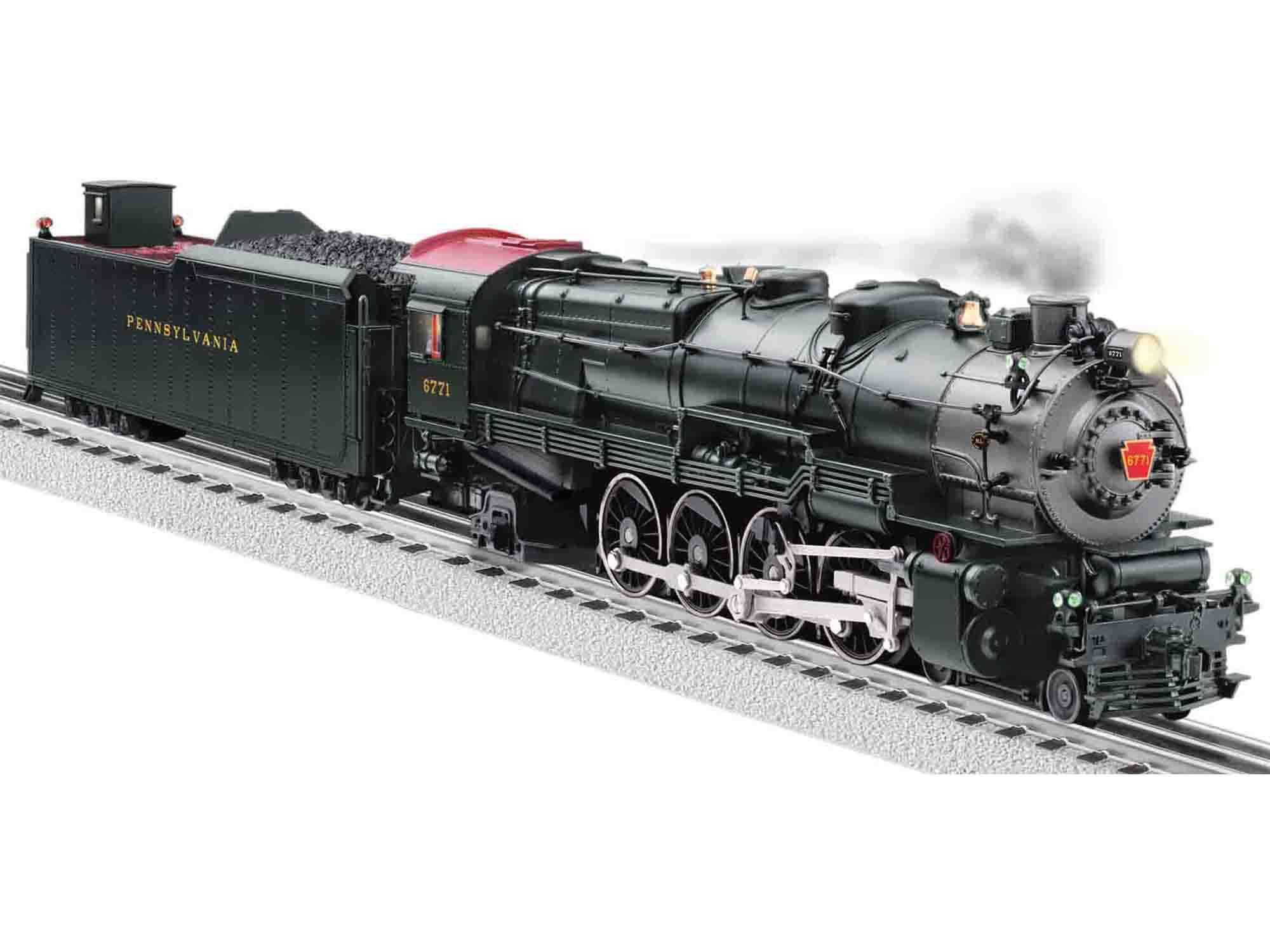
Lionel also cataloged the 6-91247 set in 2014 with PRR M-1a 6755 at the head of newly modeled two bay GLA hoppers and an N5B caboose.
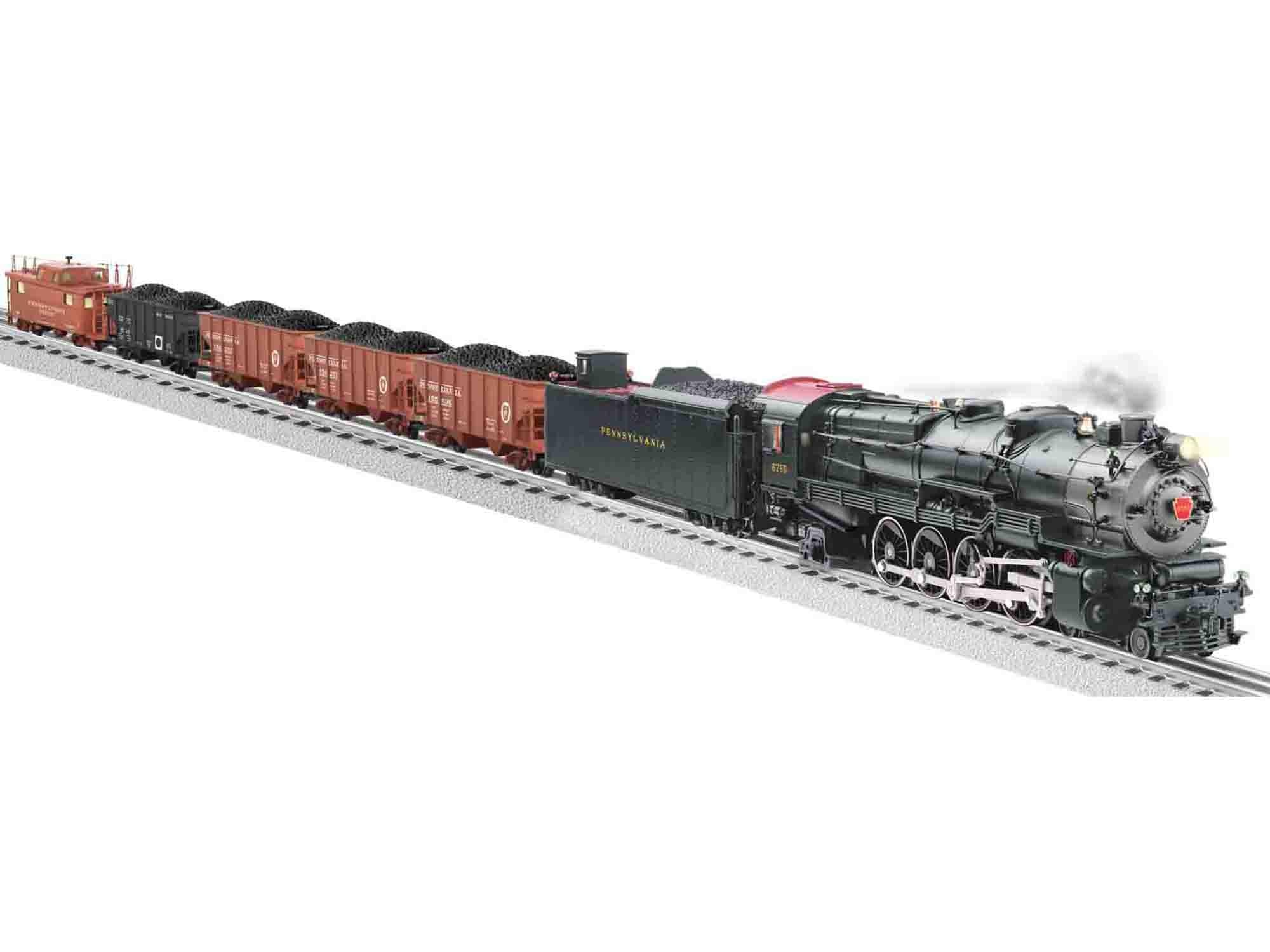
In 1946 a total of 40 M-1s and M-1as were rebuilt into M-1b class locomotives.
MTH introduced their M1b model decorated for surviving PRR 6755 as 20-3084-1 in their 2002 Volume II catalog.

Lionel offered a model of PRR 6750 as 6-11147 in 2008 Volume I.

Lionel's model of the USRA Light Mountain appeared only in their 2000 Volume II catalog. The road names offered included two original USRA light mountain recipients, the Southern and the New Haven as well as 4-8-2 operator Western Pacific.
SOU 1491, 6-28057

NH 3310, 6-28058

WP 179, 6-28059

Union Pacific
The MTH Union Pacific Mountains are the ones that got away. Cataloged as both coal and oil burners in both 2 rail and 3 rail at the depths of the great recession in 2009 they received insufficient orders to be produced. Let's hope they make a come back in a future catalog with a GN P-2 mountain to follow.
Many O scale brass 4-8-2 locomotives have been offered over the last 20+ years. Weaver entered the O scale brass market with a model of the PRR M-1a. Weaver also offered several versions of the Great Northern's P-2 class. Both appear for sale in the secondary market at retailers, shows and on line sites.
Sunset/3rd Rail has offered several 2 and 3 rail O scale 4-8-2s. Road names include ATSF, B&O, B&M, New York Central, Norfolk & Western, Pennsylvania, SP and more.
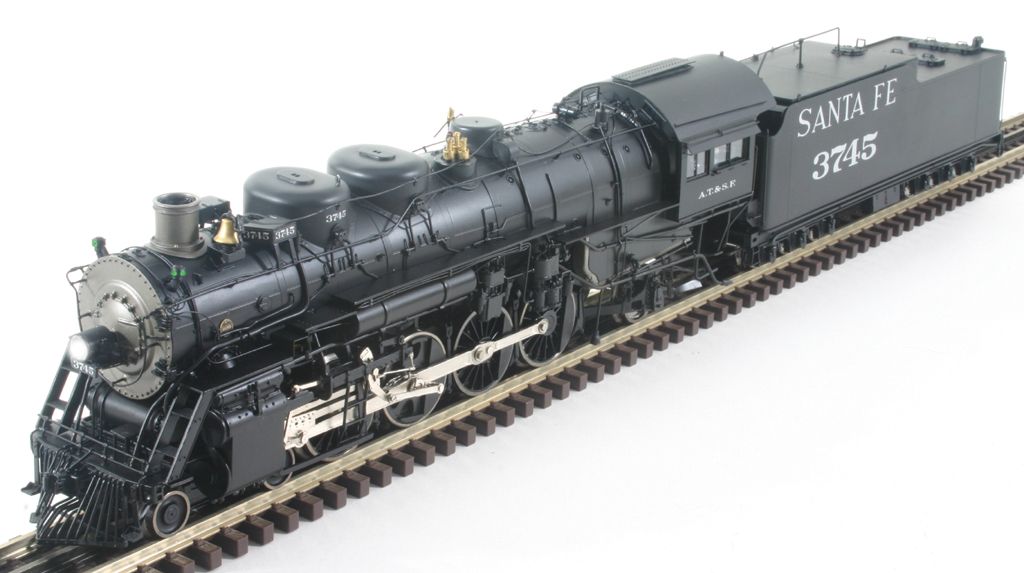
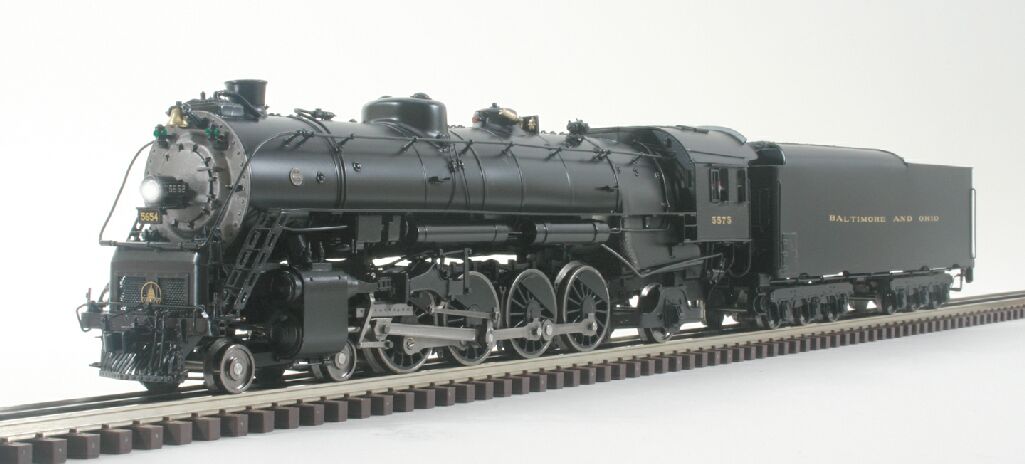
Your comments, corrections or additions are most welcome. Let us know about the details, features and operating characteristics of your Mountains and Mohawks.
And let's see your O scale Mountain and Mohawk photos!
For information on other types of locomotives see the O Scale Locomotive Guide.
https://ogrforum.com/t...ale-locomotive-guide
And for information on scale freight cars see O Scale Freight Car Guide.
https://ogrforum.com/t...le-freight-car-guide












